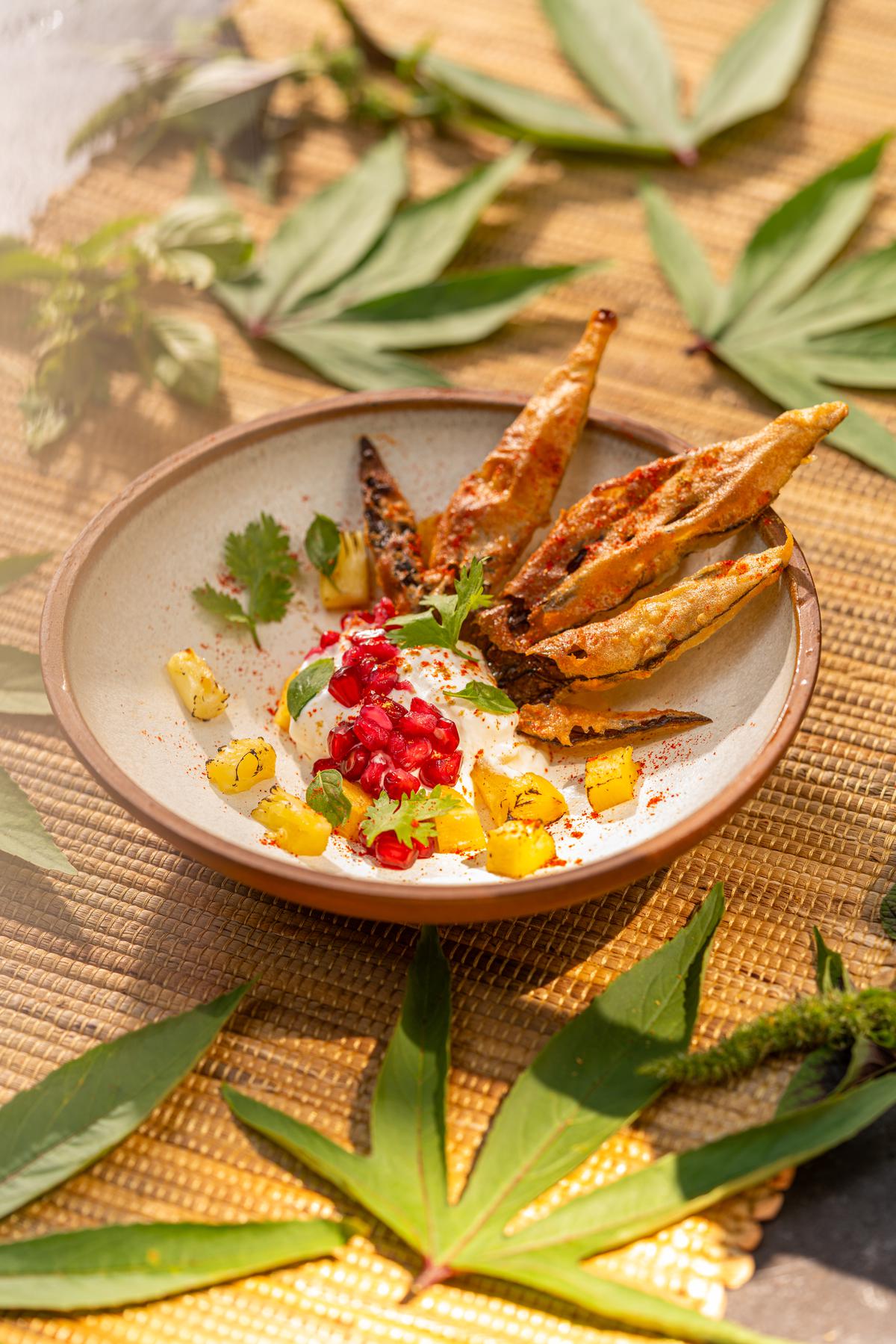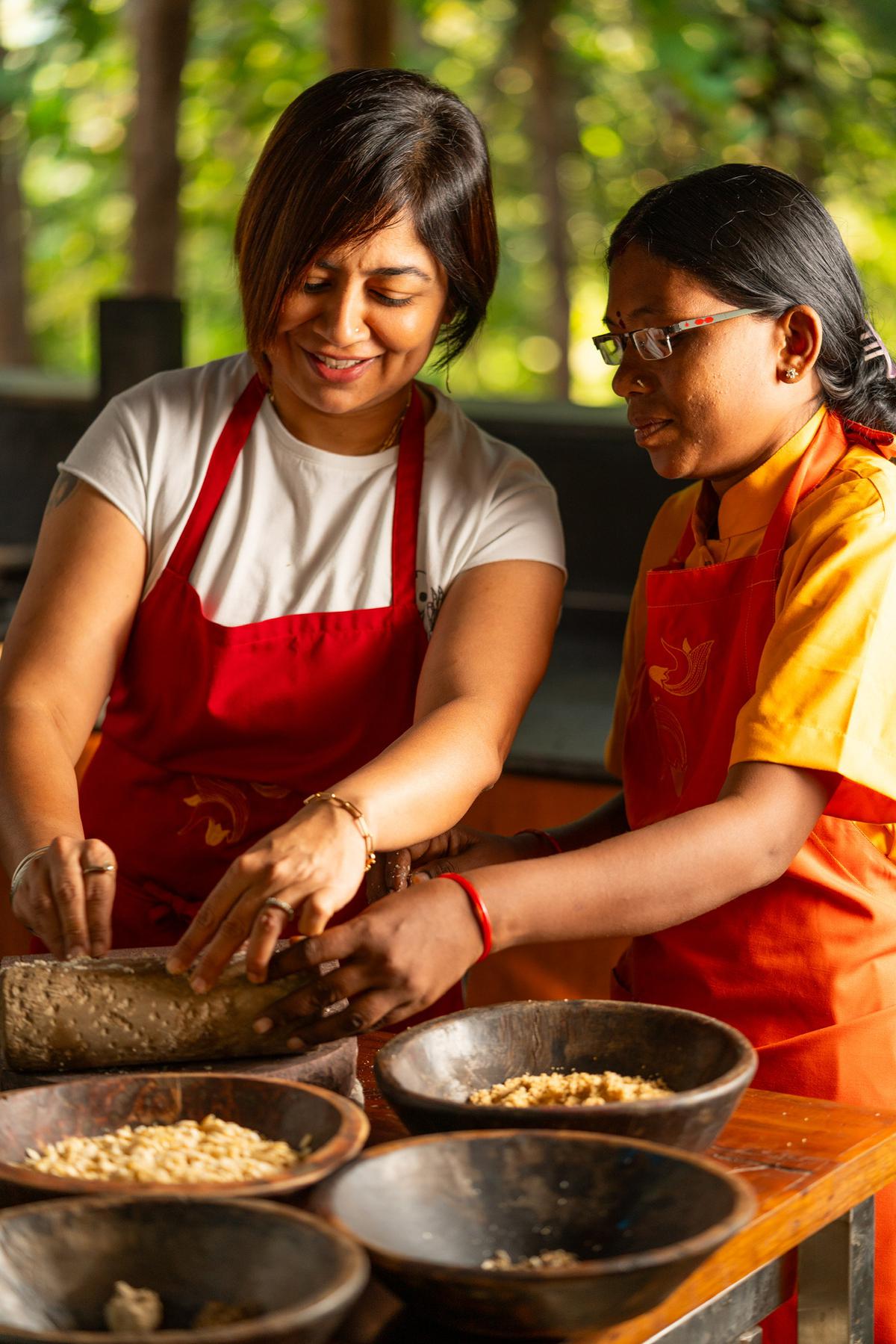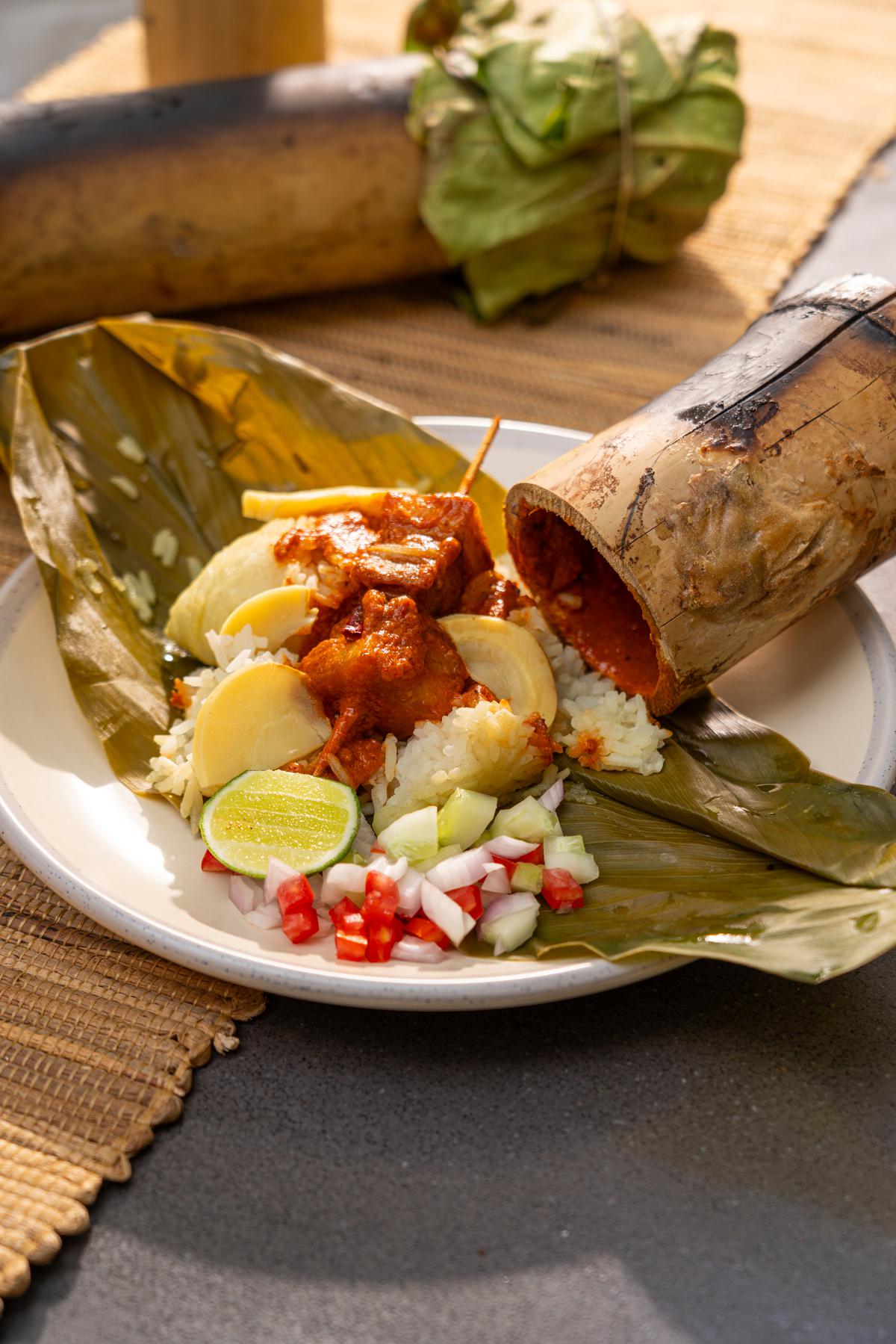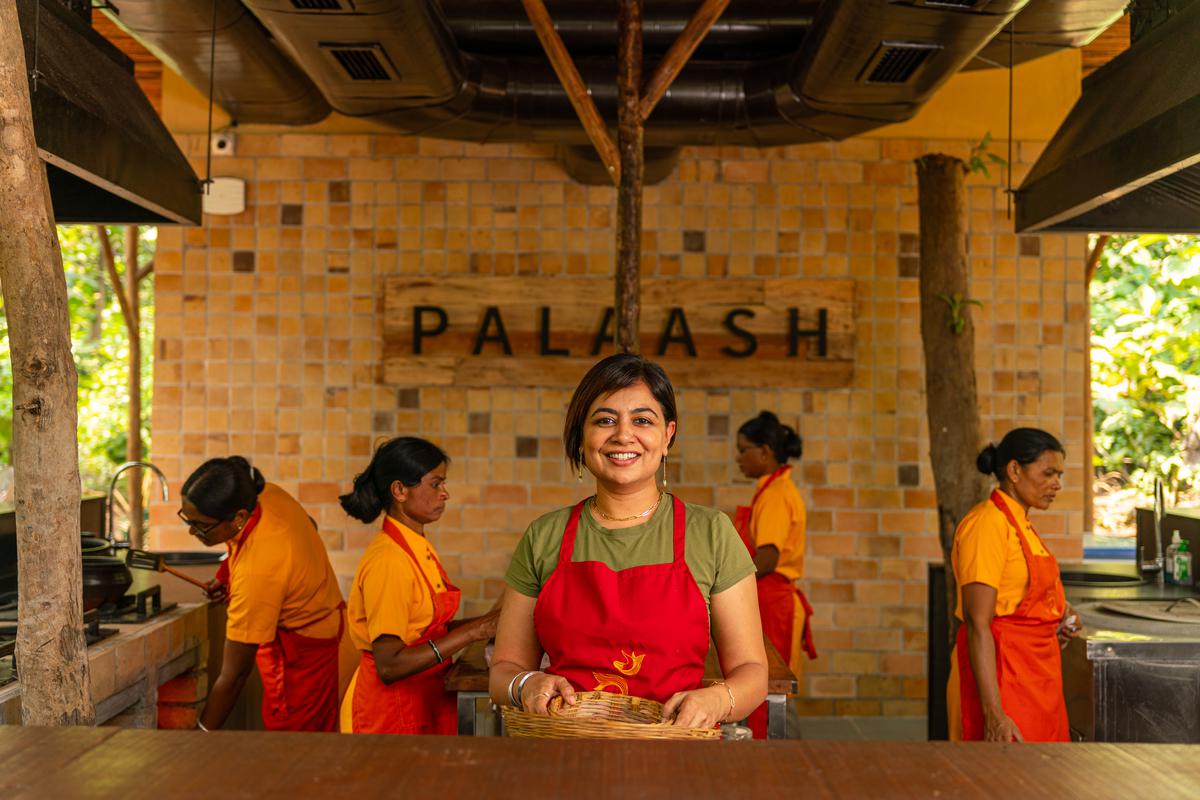I hail from the lush, forest-wrapped district of Adilabad in northern Telangana, where dining in the woods is a traditional affair. Exploring the forests with friends and family often involved cooking on a chulha (firewood stove) and enjoying meals served on plates made by weaving the leaves of palash (Butea monosperma) tree, also known as the flame of the forest.
But a recent visit to Palaash, an exclusive dinner-only restaurant run by Chef Amninder Sandhu near the virgin forests of Tipeshwar Wildlife Sanctuary in Maharashtra’s Yavatmal district, unveiled a surprise: a distinctive seven-course meal, fusing Maharashtrian and Assamese cuisine, slow-cooked on an open fire for hours. Since Amninder grew up in Assam, she has interestingly added the state’s delicacy, bamboo smoked pork, and combined it with Maharashtra’s indrayani rice in the menu.
The traditional ratalu tart served at Palaash
| Photo Credit:
Special Arrangement
Tipeshwar sanctuary is a picturesque five-hour drive from Hyderabad and a three-hour journey from Nagpur, the Orange city. A hotspot for wildlife enthusiasts, the mesmerising forest setting of the restaurant at the Tipai luxury safari resort by Wildlife Luxuries makes dinner feel like an adventure: it is set in the middle of the woods raising hopes of sighting wild animals, including a tiger.

Ambaadi chaat served at Palaash forest restaurant
| Photo Credit:
Abhinay Deshpande
The degustation menu at Palaash opens with amuse-bouche, a delicate white chocolate ball bursting with fresh orange juice, followed by the Ambaadichaat, a combination of homegrown tangy ambaadi (sorrel) leaf, charred ananas (pineapple) and curd. The subtle tanginess of the creamy curd and ambaadi leaf is well balanced by sweet pomegranate and tamarind and if you wish, you can pair the dish with Sula Brut.

Chef Amninder Sandhu at work
| Photo Credit:
Special Arrangement
Every recipe is inspired by locally sourced ingredients, says Amninder, who is a champion of sustainable open-fire cooking. “I like to cook Indian food the way it was always cooked. I think it’s not always important to reinvent the wheel. If you can make it better, that’s fine. If not, it can be celebrated in its original form. Palaash does just that by offering a regional local dining experience that stays true to its roots,” she says.
Soon, head chef Vasundhara Gupta emerges from the island kitchen with ratalu tart, a beautifully presented dish consisting of the pastry base with a layer of dal makhani, kashiphal (pumpking paste), ratalu gulab (sweet potato) and a slice of lemon.
For the vegetarians there is arbi (colocassia) bhakri, which is like a desi taco — cooked colocassia is spiced up with lal theccha (red chill chutney) and placed on palm-sized rotis made with rice flour. Meat-eaters may like to tuck into a smoky raan cooked for over eight hours in the underground barbecue pit. Both the dishes go well with chardonnay.

The traditional dish Saoji vanga served at Palaash
| Photo Credit:
Abhinay Deshpande
“Since every dish is slow cooked to retain its flavour, we start preparing for dinner in the afternoon,” says Vasundhara while serving Nagpur’s famous saoji vanga (roasted brinjal dry curry) with paratha and charred spring onion served in a bowl – eating this was a bit challenging and the chef might want to reconsider serving it on a plate for a better dining experience. Mancura Etina Sauvignon Blanc gives the dish a refreshing finish.
Food at Palaash is cooked by women, many of whom are tribal women from the neighbouring Marathwakdi village. “Over 80 % of the workforce in the kitchen is from the village; our aim is to create employment opportunities,” says Amninder. “These women possess a unique culinary finesse and pay meticulous attention to finer details, which makes the food special,” she adds.
While the women were trained in the art of cooking different dishes by Chef Vasundhara, she in turn, learned how to control the flames in the open-fire kitchen from them. “It was challenging as I’m used to cooking on gas, but mausis (aunts) taught me how to control and cook on the open fire. It was a two-way learning,” she says.

Bamboo smoked pork
| Photo Credit:
Abhinay Deshpande
It took about three months to train the local women to execute parts of Palaash’s degustation menu, which has a contemporary Western spin. “They executed basic things, but did them very well, like the jowar bhakri or the theccha or paratha. And of course, they have that gift that can be enhanced,” says Amninder.
After a gendaphool (marigold) sorbet, I am served spicy bamboo smoked phanas (jackfruit) with Indrayani rice steamed with turmeric leaves, which give it a fresh, delicate aroma. Dinner ends with mahua kala jamun and pista ice cream presented in palash leaf cup wraps.

Chef Amninder Sandhu with her team at Palaash restaurant
| Photo Credit:
Abhinay Deshpande
The tribal women who had been farm labourers. Their jobs at Palaash have empowered a lifestyle transformation, marked by a stable income and increased participation of their husbands in household chores, which was not the case earlier.
“Employment has changed everything in my life,” says Sunitha Ashok Ade from Marathwakdi. She adds, “We lead a more dignified life now. And, the training has added a new dimension to our woodfire cooking skills.” Beside her, Pushpa Sidam agrees. “I used to work as a farm labourer, and my life revolved around “chul and mul” (stove and children in Marathi), “ she says. “But now that has changed. I have learnt so many things and cooking here feels at home.”
The seven-course meal at Palaash costs Rs.4,000 plus Tax (without alcohol) per person. (To book, call 9699786275)
(The writer visited Palaash at the invitation of chef Amninder Sandhu)